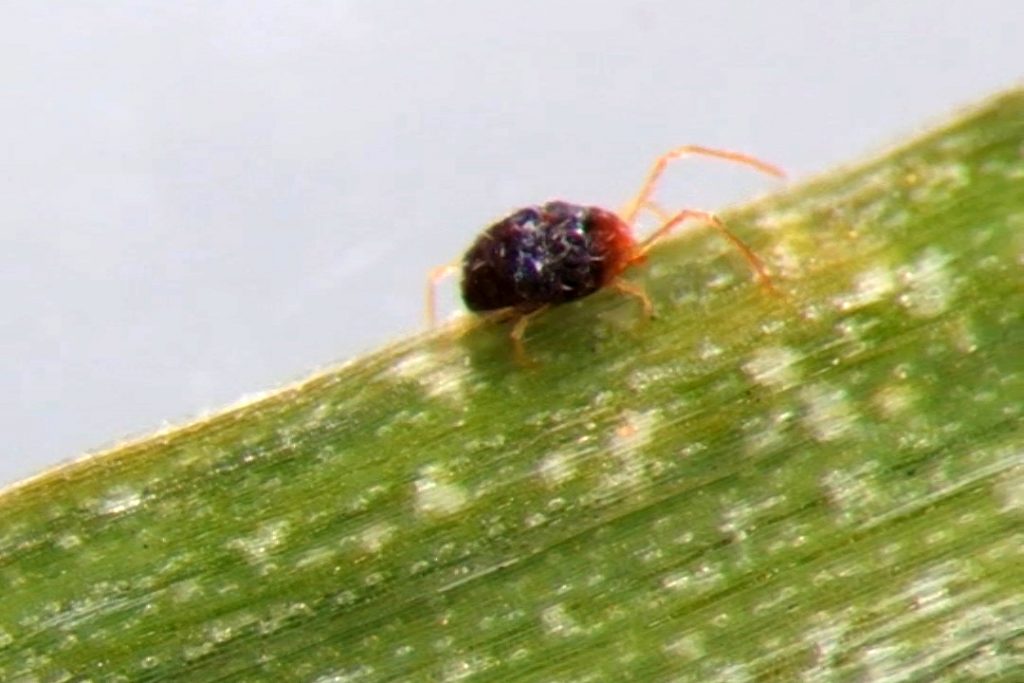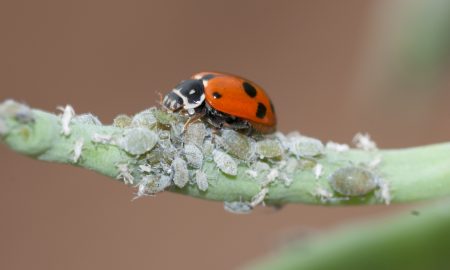The brown wheat mite is a sporadic pest and is most active in dry, warm weather.
High levels of brown wheat mite (Petrobia latens) have been observed in wheat paddocks in the northern Riverina.
The mites have caused mottled discoloration of leaves, that manifest similar to water-stress symptoms. This is typical damage caused by heavy infestations of this pest.
As brown wheat mite populations can be reduced by heavy rain, the drier than usual conditions have been aiding mite survival.
Brown wheat mite eggs
Tiny white specks have also been observed in soil around the base of the plants, which are mostly likely the ‘diapause’ eggs laid during spring.
Like several other mite species, brown wheat mites produce two types of eggs.
Eggs laid during winter are red in colour and are the source of the second generation during the growing season.
In spring, females begin to produce white ‘diapause’ eggs, which can survive the hot summer and only hatching the following autumn when there is adequate moisture.
Brown wheat mite in cereals
Broadacre crops that are attacked by brown wheat mites include wheat, barley, oats and triticale, and are most at risk during dry periods.
Mites are found on the leaves, with numbers often highest near the tips of leaves.
The economic importance of brown wheat mites as a pest is unclear. Chemical control may be warranted if large numbers are concentrated on the flag leaf in times of moisture stress.
Brown wheat mite identification
At first glance, brown wheat mites can be easily mistaken for Bryobia mites as they both belong to the spider mite family.
Like Bryobia, brown wheat mites are oval-shaped with eight legs, of which the two front legs are distinctively long.
But a closer inspection will reveal some differences.
Adult brown wheat mites are approximately 0.6 mm long, with a red-brown globular body and pale yellow-orange legs.
In contrast, Bryobia adults grow slightly larger to approximate 0.75 mm long and have a flattened, squashed appearance.
The bodies of Bryobia can be dark grey, pale orange or olive in colour and they have red-orange legs.
These differences may not be easy to spot in the field, so if you are uncertain, you can send us your mites for an identification confirmation.

Photo by Julia Severi, Cesar Australia 
Photo by Julia Severi, Cesar Australia
Cover image: Photo by Andrew Weeks, Cesar Australia





